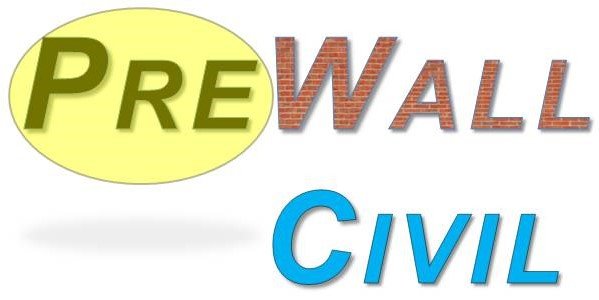A Shear key nestled in a Retaining wall is a crucial structural component intricately crafted to enhance the wall’s stability and overall performance. This strategic inclusion becomes particularly imperative in scenarios where the potential for sliding along the interface between the wall and the foundation soil emerges as a prominent concern. At its core, the primary objective of a shear key is to staunchly resist the horizontal sliding forces that, if unchecked, could compromise the integrity and functionality of the Retaining wall.
Table of Contents
Key Components and Construction Shear key in Retaining wall:
Location of Shear key:
Shear keys invariably find their designated position at the base of the retaining wall, precisely where the wall interfaces with the foundation soil.
Depth of Shear key:
The depth to which the shear key extends into the foundation soil is meticulously calculated. This depth is contingent upon factors such as soil characteristics, wall height, and the anticipated lateral forces.
Excavation:
Prior to the implementation of the shear key, a methodical trench or excavation is undertaken at the base of the retaining wall. This trench seamlessly penetrates into the foundation soil, setting the stage for subsequent construction.
Material:
The shear key, providing stability, is commonly filled with compacted granular materials such as gravel or crushed stone. This chosen material fosters a stable and frictional connection between the retaining wall and the foundation soil.
Width of Shear key:
The width of the shear key is calibrated with precision, accommodating the lateral forces and potential for sliding. A wider shear key consistently results in increased stability, highlighting the careful design behind it.
Why shear key is provided in Retaining wall
Including a shear key in a retaining wall is a purposeful and crucial engineering decision, driven by the need to strengthen the structure against potential horizontal sliding forces. This thoughtful addition addresses the inherent vulnerability at the junction of the retaining wall and the foundation soil, serving as a strategic measure to safeguard the wall’s structural integrity and overall stability.
Functions and Benefits of Shear key in Retaining wall:
Sliding Resistance:
Foremost among its functions, the shear key steadfastly resists the horizontal sliding forces that may exert themselves upon the retaining wall. This resistance becomes pivotal in forestalling any proclivity towards wall failure attributable to sliding along the foundation soil.
Enhanced Stability:
Creating a stable and compacted area at the base of the retaining wall notably boosts the overall stability of the structure, especially in cases where the natural resistance of the soil to sliding is considered inadequate.
Reduced Displacement:
The shear key assumes the role of a mitigator, curbing the potential for unwarranted lateral displacement of the retaining wall. This meticulous intervention ensures that the wall steadfastly maintains its designated position over the course of time.
Improved Performance:
Adding a shear key is a proactive move to improve the overall performance and longevity of the retaining wall. This is particularly important in areas prone to soil displacement or seismic activity, where structural reinforcing is required.
In essence, the function of a shear key in a retaining wall is integral to its role as a guardian against the erosive forces of horizontal sliding. Beyond its physical attributes, the shear key emerges as a sentinel, ensuring the retaining wall stands resolute in the face of dynamic environmental challenges. Its careful integration into the structural framework becomes an emblem of precision and foresight in engineering design.
Frequently Asked Questions
Position of shear key in Retaining wall?
The shear key in a retaining wall is strategically placed at the base to resist horizontal sliding forces. It’s positioned to fortify stability, especially in areas prone to soil movement, ensuring the wall remains robust and structurally sound.
When Shear key is provided in Retaining wall?
The shear key is added to a retaining wall to prevent horizontal sliding, typically placed at the base. It strengthens stability, which is critical in areas prone to soil movement, and provides the wall’s robustness against external forces.
